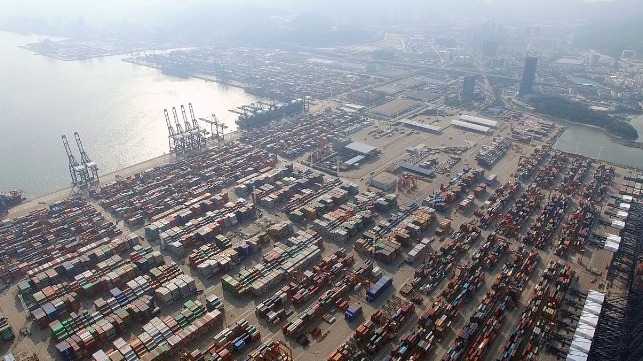Fears of Repercussions as Delays Grow in Southern Chinese Ports

Fears are continuing to grow over the potential repercussions to global trade and the shipping industry as China struggles to control a new wave of COVID-19 cases in clusters in the southern port region. Two weeks into the outbreak, experts are now saying the scope of the disruption exceeds that from the Suez Canal blockage in March and is likely to continue to spread contributing to further rises in already record high container shipping costs.
Chinese officials announced the first containment efforts and restrictions at the port of Yantian on May 25, which slowed vessel arrivals and the loading of exports. Initially, reports indicated that the outbreak was mostly limited to communities near Yantian, but it has also begun to impact the neighboring port of Shekou, both in the Shenzhen province, resulting in growing delays. Port officials are saying that they plan to keep quarantine restrictions and implement disinfection measures at least into next week.
The delays and ripples are continuing to grow. In its latest customer bulletin, Maersk has now raised its forecast for delays up to 15 days moving through the Yantian International Container Terminal. Project44 released data from its analysis of the impact on the supply chain highlighting that dwell times at Yantian are fluctuating wildly from a minimum of one day while median dwell times were at approaching 18 days for containers waiting for loading. Carriers have been warning shippers that the ports are now restricting gate traffic to manage their growing backlogs.
Additional concerns were raised on news that the outbreak has also appeared in the industrial region in Guangzhou northwest of Shenzhen impacting the Nansha port. Nansha s one of the fast-growing ports in the region and was expected to handle some traffic diverting from Yantian. Similar restrictions to limit the spread of COVID-19 are now impacting business activity in the second region, with port officials saying they too will maintain their efforts into next week.
The result is increasing port congestion in the South China Sea. As of June 7, the analysis from project44 reports that 47 vessels are approaching the Yantian. Their analysis says that a third of the vessels approaching Yantian are being delayed leading to fears that the congestion will continue to grow in the coming weeks.
“The recent rise in COVID-19 cases in China has resulted in a shutdown that may add to the already record cost of shipping goods out of China,” forecasts Josh Brazil, the vice president of marketing at project44. “The delays have already resulted in pressurizing soaring shipping prices within China due to a lack of containers and increased export demand. These high shipping costs are just one factor that may contribute to an additional looming threat to global inflation.”
In the last year, freight costs between China and the U.S. West Coast have gone up by 156 percent, while China to the U.S. East Coast trade lane saw an increase of 162 percent. Freight prices between China and North Europe gained the most, witnessing a staggering 535 percent increase.
The shipping industry had already been confronted with high demand, reduced capacity, and increased dwell time across the Chinese coast as it worked to manage the record export volumes coming from China. The interruptions caused by the COVID-19 outbreaks are further reducing container supply while demand remains high in the U.S. and Europe for Chinese goods.
The obstruction will mean additional blank sailings in June from Yantian to Hong Kong and the U.S. West Coast forecasts project44. Container capacity may reduce by roughly 50 percent from the port, and there could be restrictions on the carriers allowed to release premium shipping containers. For Asia-Europe trade lanes, carriers have announced blank sails from northern ports like Tianjin and Quindao, citing congestion issues.
With Chinese officials extending the lockdowns into more southern cities, it is unclear how long the disruptions will continue and the full impact it will have on exports in the coming weeks and months.
photo by Gigel ata licensed under CCBY-SA4
